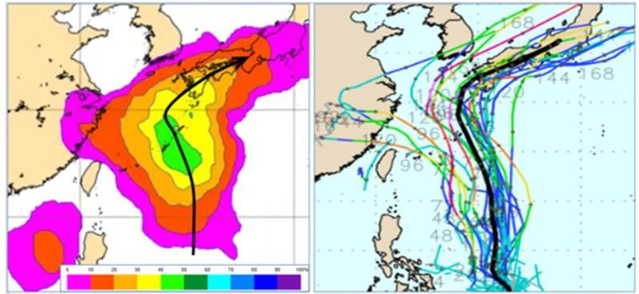Taipei – August 31, 2025 – Another tropical system could soon develop into a typhoon near Taiwan, according to Wu Derong, adjunct associate professor of atmospheric sciences at National Central University.
In his “Leaking Secrets Classroom” column for the Meteorological Application Promotion Foundation, Wu cited the latest European Centre for Medium-Range Weather Forecasts (ECMWF) model issued on August 30 at 8:00 p.m. The forecast suggests a 50% chance of a tropical disturbance forming in waters east of Taiwan this week.
Wu noted that the system’s average projected path leans northward, likely moving near the Ryukyu Islands before veering sharply northeast toward Japan. However, he emphasized that model simulations remain scattered, showing a wide range of possible tracks. He urged continued monitoring as further adjustments may be made in the coming days.
Weather Outlook for Taiwan
Wu said that Taiwan will generally experience sunny weather with intermittent clouds today, but ultraviolet rays will reach dangerous levels around midday. He advised residents to take precautions against sunburn and heatstroke. Afternoon thunderstorms may also develop in mountainous areas.
Forecast temperatures are as follows:
-
North: 22–37°C
-
Central: 23–36°C
-
South: 24–35°C
-
East: 22–35°C
From September 1 to 3, southern Taiwan will see an increase in moisture, while most regions remain hot and partly cloudy. Short-term showers may occur in the eastern half and Hengchun Peninsula, with mountain thunderstorms potentially spreading into some lowland areas.
On September 4 and 5, sunny and sweltering conditions will dominate nationwide, with northern highs possibly hitting 38°C. Strong UV radiation is again expected, and brief afternoon mountain thunderstorms may occur.
By September 6, moisture will rise slightly in the south, but conditions will remain mostly sunny to partly cloudy across Taiwan. Isolated showers may develop in the east, Hengchun Peninsula, and mountain regions.
Wu stressed that his remarks are for academic discussion only and reminded the public to rely on the Central Weather Administration (CWA) for official forecasts.



